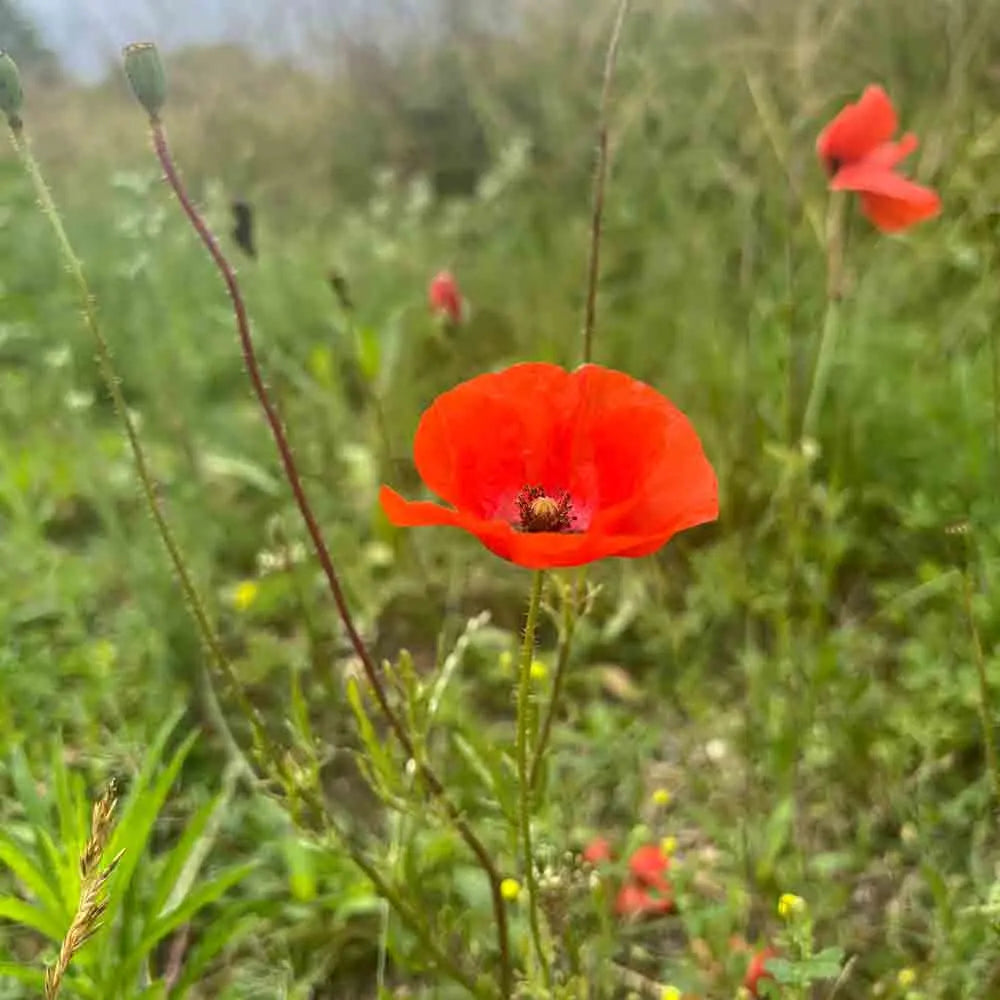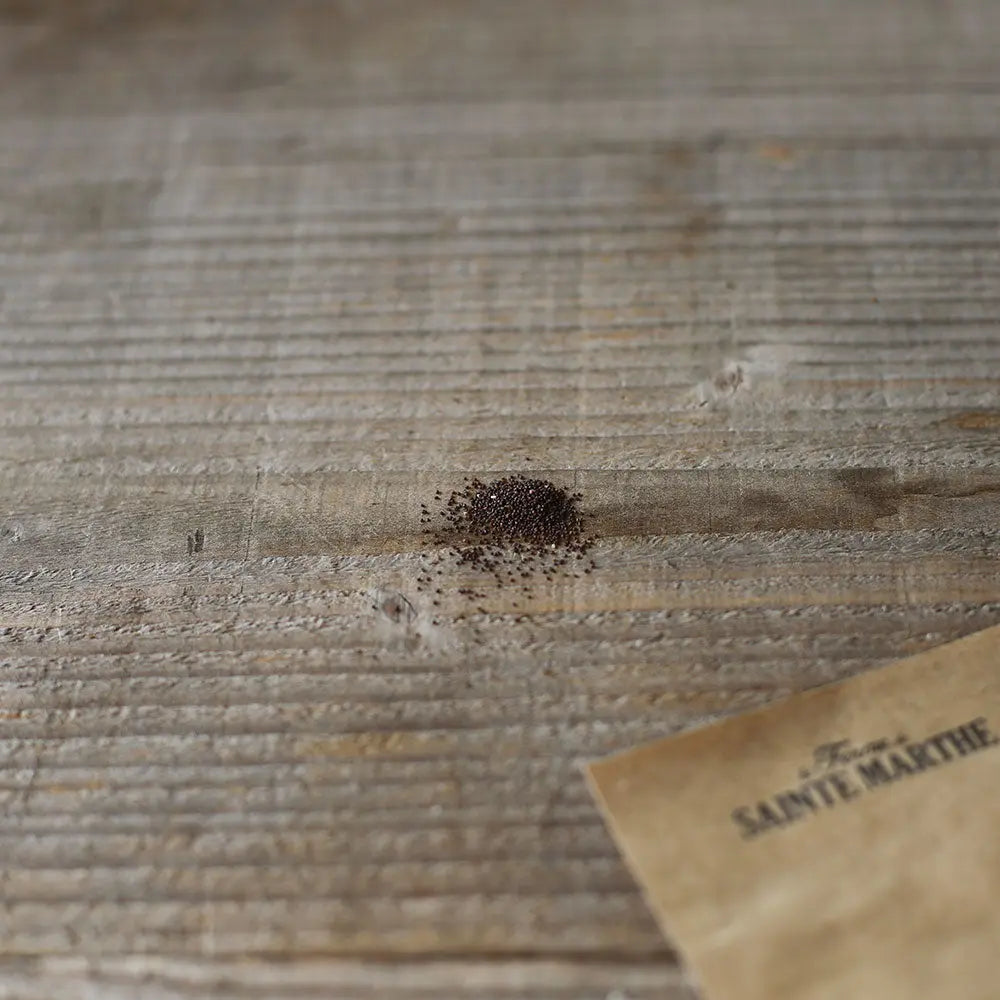SINGLE RED POPPY AB
Papaver rhoeas
The Wild Poppy is a very hardy plant with a bright color, it has all its brilliance, grown in borders or in flowerbeds mixed with centaury, phacelia... Sowing: in autumn for flowering from March to the end of June; in spring for flowering from June. The poppy is a so-called colonizing plant. It prefers freshly turned soils: cultivated fields, especially winter cereals, but also spring (formerly a messicolous plant that herbicides have often driven out), along hedges or roadsides, embankments and wastelands. It appreciates fresh soils, well supplied with water, sand and clay, and containing limestone and nutrients. Sowing is possible in autumn for flowering from March to June; in spring for flowering in June. To prepare the soil for sowing, you can rake or scratch the surface of the land concerned, compact the earth with the back of your tool. Then water the ground with a light spray to moisten the soil. Broadcast your poppy seeds. Once the seeds are sown, take your rake again to rake and level the soil again. Finally, finish by watering. Make sure to keep the soil moist until the poppies emerge. Photosensitive seeds germinate when they are near the surface of the soil. But be careful, germination is almost impossible at a depth exceeding 1 to 1.5 cm. After that, no further intervention will be necessary for their entire lifespan. Poppies reseed themselves naturally from one year to the next. A poppy plant can produce up to 50,000 seeds. These seeds retain their germination capacity in the soil for a long time, generally for 5 to 8 years. According to some authors, they can remain dormant in the soil for more than 80 years. With a bag of 1000 seeds you will be able to colonize a space of 1 to 2 square meters, which will then allow nature to do its work of dissemination.









